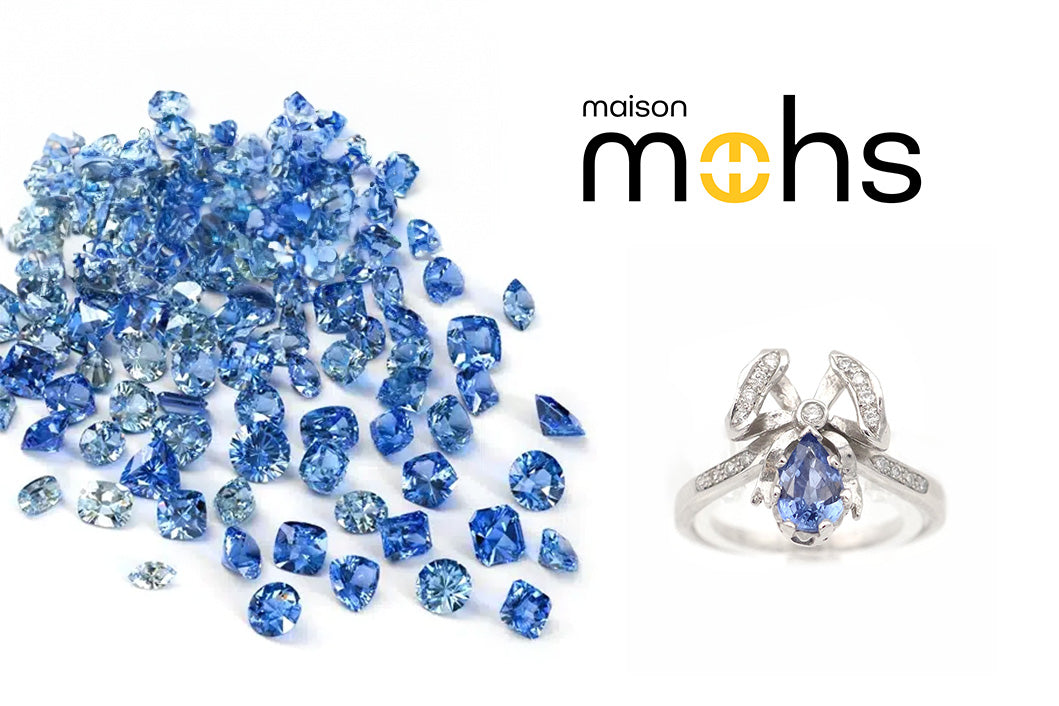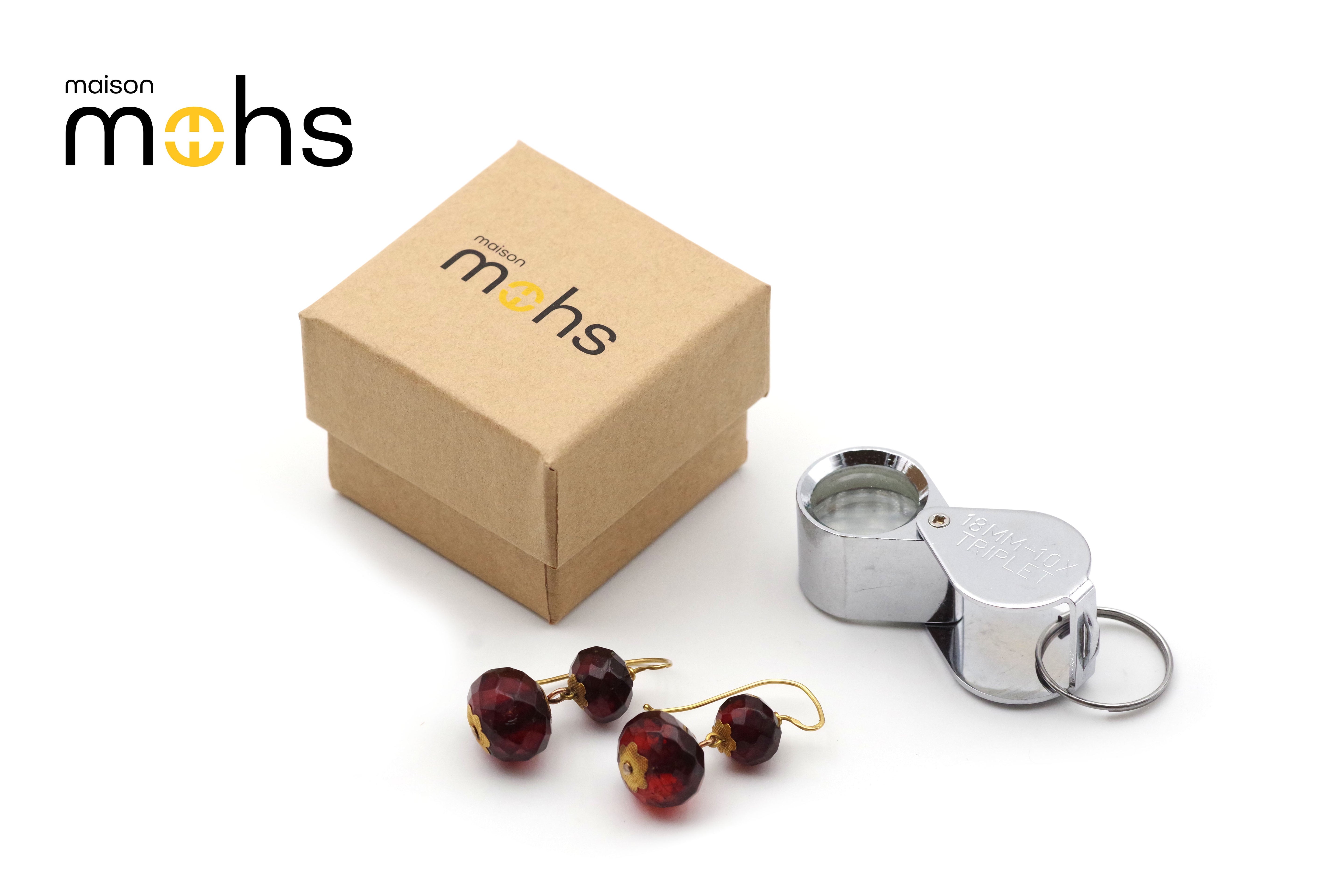
Synthetic vs natural sapphires: key differences you should know!
Sapphire is one of the most prized gemstones for its color and rarity. However, not all sapphires are mined from nature: there are also synthetic sapphires, created by man in a laboratory. So, what are the differences between a natural sapphire and a synthetic sapphire? How do you recognize them and which one should you choose? Here's everything you need to know before purchasing a piece of jewelry adorned with this fascinating stone.
What is a natural sapphire?
A sapphire is a precious stone formed deep within the Earth over millions of years under exceptional geological conditions. It is mined in Asia (Sri Lanka, Burma, Thailand, China), Africa (Madagascar, Tanzania), and Australia. Sapphires from Sri Lanka are often referred to as Ceylon sapphires , renowned for their luminous blue color and high purity.
Characteristics of natural sapphires
-
Formed by natural processes without human intervention.
-
May have inclusions (small impurities) visible under a magnifying glass.
-
Available in a wide range of colors: blue, yellow, pink, green, etc.
-
Rarity and value depending on color, purity and provenance.
Some natural sapphires are heat treated to improve their color and transparency, but this remains an accepted practice in the jewelry market, provided it is mentioned.
What is synthetic sapphire?
A synthetic sapphire is a stone created in a laboratory. The Verneuil process is one of the most widely used techniques, reproducing the natural conditions of sapphire formation in a very short time. This process was invented in 1902 by French chemist Auguste Verneuil. These synthetic stones are also referred to as Verneuil sapphires .
From then on, synthetic sapphires began to appear in jewelry. They became particularly common in jewelry from the post-war periods (1920s, 40s and 50s), due to the difficulty of transporting natural sapphires from traditional mining areas. Many antique pieces of jewelry, especially rings from the Art Deco and Retro periods, are thus adorned with synthetic sapphires .
Retro synthetic sapphire gold lapel clip , circa 1940
sold by maison mohs
Characteristics of synthetic sapphires:
-
Same chemical and physical composition as natural sapphires.
-
Often perfect appearance: no or very few inclusions.
-
Cost much lower than a natural sapphire.
-
Available in all colors and sizes.
While synthetic sapphire is truly a "real" sapphire in terms of composition, it lacks the rarity and historical value of naturally mined sapphire.
How to distinguish a natural sapphire from a synthetic sapphire?
It can be difficult to tell the difference with the naked eye, but there are a few clues to spot a synthetic sapphire:
 Natural sapphire gold bangle ring , circa 1950
Natural sapphire gold bangle ring , circa 1950
sold by Maison Mohs
The inclusions
-
Natural sapphires have internal inclusions, visible under a x10 magnifying glass.
-
Synthetic sapphires are often too "perfect": without inclusions, a large carat and a beautiful color
The price
-
A good quality natural sapphire is much more expensive than a synthetic sapphire.
-
Beware of prices that are too low for stones advertised as "natural" or "sapphire."
Growth patterns
-
Natural sapphires exhibit irregular crystal structures.
-
Synthetic sapphires sometimes show growth lines typical of the Verneuil process.
Legislation on synthetic sapphires
According to French and European legislation, the sale of synthetic stones (including synthetic sapphires) must state their artificial nature. The term "sapphire" alone may only be used to refer to a natural stone.
Labels such as "synthetic sapphire" , "laboratory-created sapphire" or "Verneuil sapphire" are mandatory to avoid any misleading information about the nature of the stone. Professionals are also required to clearly indicate the treatments undergone by the stones, whether natural or synthetic.
Only a gemological expertise can be completely certain of the nature of a sapphire.
4. Which sapphire to choose?
The choice between a natural sapphire and a synthetic sapphire depends on your priorities:
-
Are you looking for a prestigious gem and an investment? Choose a natural sapphire with a laboratory certificate.
-
Looking for a stone at a reasonable price? A darker sapphire or a synthetic sapphire will be more reasonably priced.
-
Looking for a unique piece steeped in history? Choose antique natural sapphires.
Sapphires, whether natural or synthetic, each have their own advantages. The key is to know what you're buying and trust reputable sellers.
Are you looking for a piece of jewelry adorned with an authentic sapphire?










